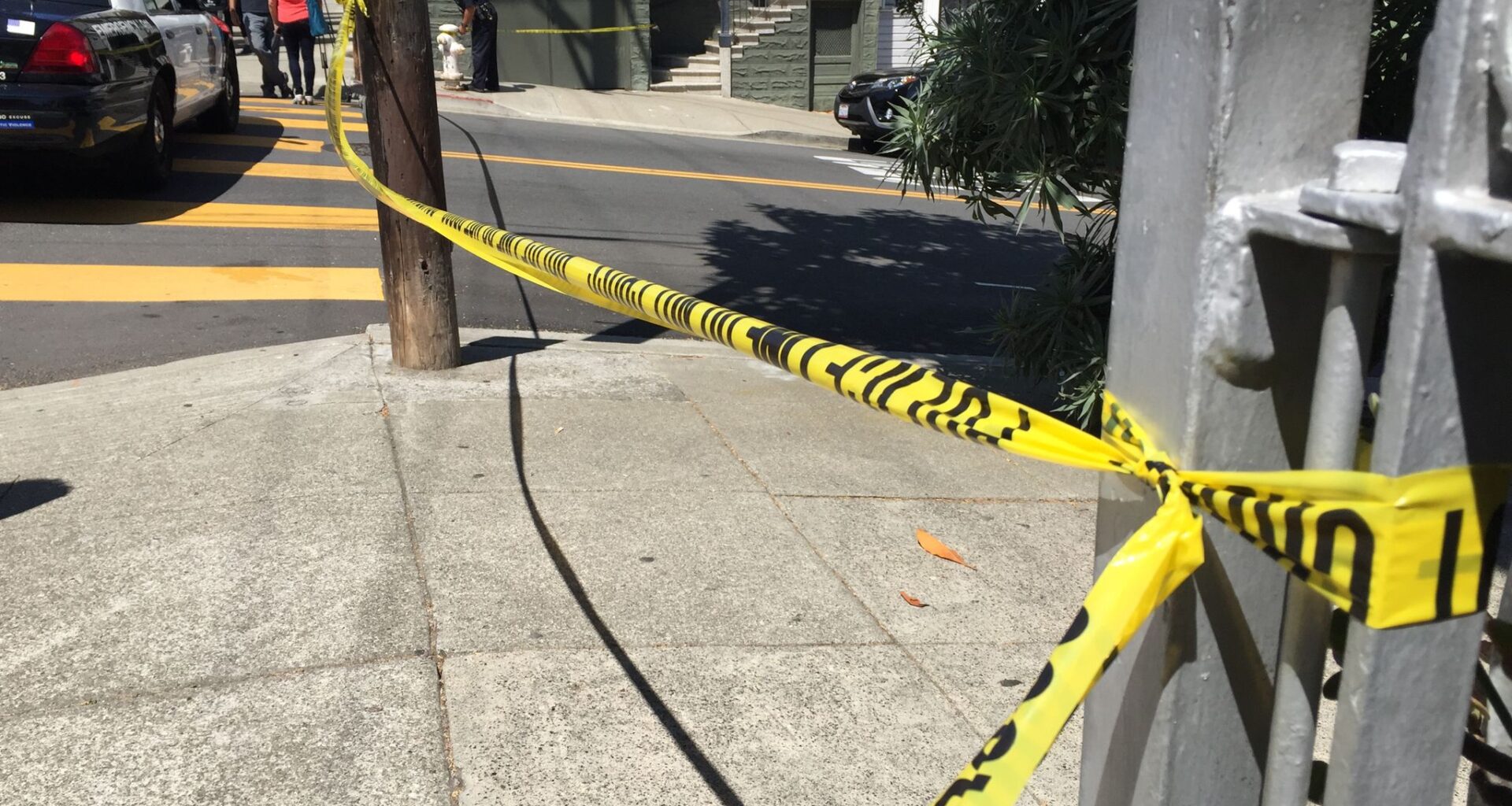Police crime scene tape is stretched across Lombard Street in San Francisco following a shooting on Aug. 25, 2015. Homicides in San Francisco could hit their lowest point since 1941.
Kale Williams
Even as President Donald Trump and even local magnate Marc Benioff have called on federal troops to quell disorder in the city, San Francisco is on track to have the lowest number of homicides in more than 70 years, the Chronicle found — potentially beating last year’s 60-year low.
By SFPD’s latest official count, there had been 19 homicides in the first nine months of the year, compared to 24 last year at the same time last year. Those numbers do not include the apparent murder-suicide of a family of four last week, which may raise the count of murders by three. SFPD has not made an official ruling on the incident, but even if those crimes are included, the city would be on track to have 27 — still the lowest since 1954, according to police data.
The stunning, sustained decline comes as Trump described San Francisco and other liberal American cities as “very unsafe places” that should be used as “training grounds” for the military. Already, the administration has moved to send the National Guard, including troops from California, to Portland over the objections of Oregon’s governor and the city’s mayor. For now, that attempt has been blocked by a judge.
Article continues below this ad
But the data often does not suggest that San Francisco and other Democrat-led cities are dangerous places, particularly when it comes to murder. San Francisco’s decline is part of a homicide drop across the nation — which could also reach the lowest numbers on record since 1960, according to crime analyst Jeff Asher.
In 2024, before the continued drop this year, San Francisco’s homicide rate was already among the lowest among big cities last year, according to data from the Real Time Crime Index, which compiles crime data from different agencies. Portland, whose 2024 per capita murder rate was about the middle of the pack compared to other cities with more than 500,000 people, has also seen a marked decline in killings so far this year.
The reasons for the national decline are not well understood, Asher wrote in a recent newsletter, and likely won’t be for a while. But he noted that nationwide crime decreases began in 2023 and have continued ever since — even though most medium and large cities, including San Francisco, now have fewer police officers now than they did before the pandemic.
Article continues below this ad
Asher added that coordinated action during the pandemic may also have brought down crime: Action across all levels of government and by nonprofits propped up services, schools and infrastructure in an effort to get local economies back to normal.
Even with the spike during the pandemic, San Francisco’s homicide rate has lately been far lower than in more violent decades. In the 1970s, homicides in San Francisco hit a high, with 146 killings in both 1976 and 1977. In the 1990s, it peaked again with 133 killings in 1993.
Every time homicide rates rise or fall, analysts and officials theorize widely about the reasons. In 2015, for example, then-district attorney George Gascon pointed to the city’s changing demographics, as well as improved police technology, as reasons behind a drop in homicides in the 2010s.
“I think the city has become older, it has become much more affluent,” he told the Chronicle at the time. “Those things have also had an impact in the way that violent crime sort of manifests itself.”
But no single theory can totally explain the shift, especially when it happens across different types of places with different policies. For example, the rate of violent crime, particularly among youth, skyrocketed in the early 1990s before plummeting through the 2000s — a change crime experts couldn’t fully explain.
Article continues below this ad
“Nobody knows why this occurred,” said Mike Males, a senior research fellow with the Center on Juvenile and Criminal Justice in San Francisco, which advocates for alternatives to incarceration, in a 2019 Chronicle interview. He added that the drop happened “almost regardless of what local, state or national policies were adopted.”
Evan Sernoffsky, a spokesperson for the police department, said that while homicides are coming down nationally, most places still have far higher rates than San Francisco.
“It shows that San Francisco is one of the safest big cities in the country,” he said. “It’s not just a narrative — it’s families that don’t have to be grieving.”
Sernoffsky pointed to ongoing community building and violence prevention efforts at “every level” of the police department in conjunction with community groups. He also pointed to the police department’s high rate of solving homicides, explaining that when police solve crimes, people trust the system more, reducing the chance of further crimes like retaliation killings. Last year, San Francisco had a 94% clearance rate for homicides, compared to 64% statewide, according to data from the California Dept. of Justice.
On top of that, fewer killings mean that investigators have more time to work on each homicide, creating a virtuous cycle, he said.
Article continues below this ad
He added that SFPD is “very optimistic” about the trends so far this year.
“We’re going to keep doing the work.”

